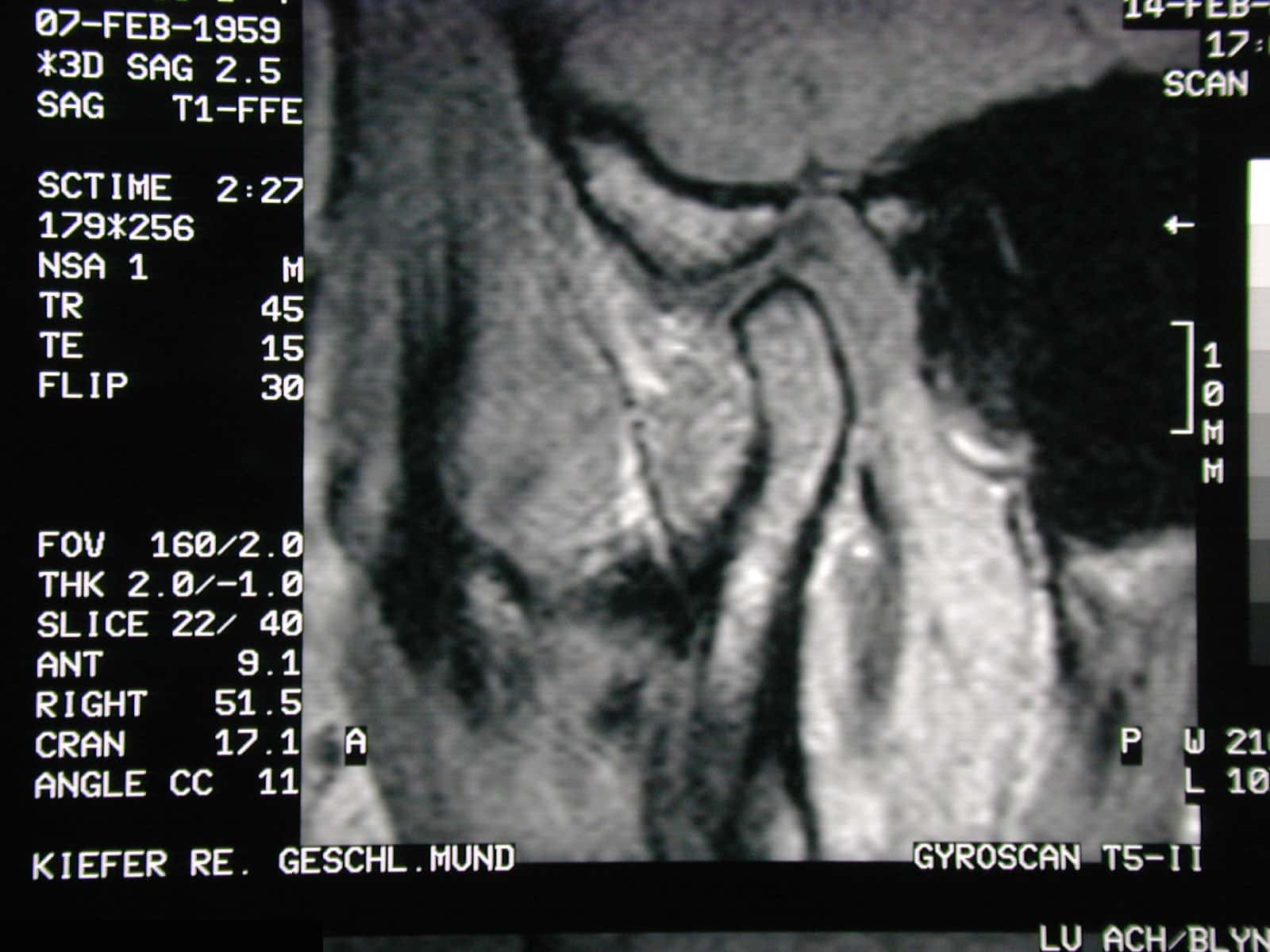MRI of the Temporomandibular Joints (TMJ)
The Magnetic resonance imaging (MRI) is a high resolution imaging process without radiation from X-rays. It is based on the application of strong magnetic fields and has no known undesirable effects today. In contrast to an X-ray, not only bones but also soft tissue can be depicted on MRI, e.g. muscle, joint capsule, articular discs, tendons, and ligaments.
Therefore, when the MRI was introduced in the 80s of the last century, orthopedists had great hope to be able to find out which exact structures in the back cause pain. Furthermore, there was great hope to use the findings of MRI targeting to treat diseased structures. Unfortunately, these wishes have been largely disappointed because many patients with structural damage are painless, as well as patients with no structural damage do have severe pain. Especially the temporomandibular joint is a very tolerant structure and can continue to function without complaint despite strong changes in shape. Therefore, damage to tissues and the pain caused are largely independent to each other, which provide us in only a few cases with a specific therapy derived from the beautiful findings of MRI.

The MRI has gained a fashionable status by some dentists and orthodontists in recent years and is often used during routine treatments of the TMJ. This is justified by the fact that one must know exactly how it looks in the temporomandibular joint and any deviations eventually found would have to be “pre-treated” before dental or orthodontic treatment could be started. Structural deviations from the ideal textbook examples are actually very common and can be found in MRI of the TMJ, but they are mostly meaningless, and neither leads to other therapies nor do they have any prognostic significance. The MRI of the TMJ is therefore usually a completely non-sense measure during diagnosis, which only distresses patients and causes high costs. Contrary to the state of the art, it is often prescribed in order to pretend a special expert status and to sell patients additional expensive therapies due to harmless structural deviations.
Justifying indications for an MRI include severe pain that persists for months and does not respond to normal treatment or the clarification prior to major elective surgery on the TMJ – both are present but extremely rare!
! Important Tip !
If you or your child is prescribed an MRI despite there are no symptoms, you can deny this orthodontic diagnostics with a clear conscience!
There’s neither a reason for an MRI even with a crackling TMJ because, in almost 100% of cases, the clicking sounds are caused by an anterior position of the disc in the TMJ. This is a harmless finding that does not require further diagnostics and/or treatment.
